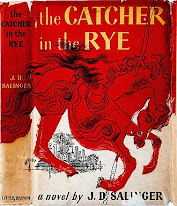For this week’s Blog Post I thought I’d say a few words about the Joan Hessayon Award of the Romantic Novelists Association. Many of you know about this, but it’s fallen to me, as the “local rep in York” to organise the actual event where the Award is made for the last couple of occasions.
This year’s event is different for a couple of reasons.
Foremost it’s the first live RNA event for a year and a half! Because of the
dreaded Covid everyone is feeling their way, getting used to meeting real
people and actually talking to friends old and new in real life, and not
on Zoom!
 |
| RNA Chair, Alison May, 2019 Winner, Lorna Cook, and the previous winner, Hannah Begbie. |
 |
| The candidates in the 2019 Award Ceremony. |
 |
| Nobody goes hungry at the York Tea!! |

 |
The people who read this blog will – in the main – be
writers. You can divide these into three classes.
- 1. Conventionally published, with one of the “Big 5”
- 2. Conventionally published with one of the new, Small Publishing Houses,
- 3. Independently or self-published.
If you are Independently published, you know you must do all
the publicity, sales, and marketing on your own.
If you are with a Small Publishing House, you will also have
to do all your own publicity, sales, and marketing by yourself!
And, if you are with one of the “Big 5”, you are STILL
expected to do a lot of your own publicity, sales, and marketing!
So the word-of-the-day is Engagement. i.e., Engaging with
your readers, your followers and the general public. In short, with anyone that
you think might buy, borrow from the library, or download your book.
And how do we find them? Social Media, I’m afraid.
People either love social media (i.e., me) or hate it.
However, this is not about your feelings of distaste, its about SELLING YOUR
BOOKS!
This post is going to look at just part of 1 facet of it.
Facebook and Facebook Groups. Why? Because Facebook is the LARGEST social media
platform by far – nearly 3 BILLION users!
And –1.8
billion people use Facebook Groups, and there are tens of millions of
groups on Facebook.
https://blog.hootsuite.com/facebook-statistics/
Facebook Groups are your way of expanding your reach. The
trick is to be selective, and only join those groups that contain fans or users
of your kind of work, be it any of the different writing tropes or genres.
Big group or small group? If a group is getting 60 posts an
hour, then your post is likely to be visible for a minute, tops. If it is
getting 3 posts a day, then your post will stick around a lot longer. Facebook
itself wants more activity directed to Groups.
“But I don’t have anything to say!”
Of course you do. Your news includes:
- 1. When your cover comes out.
- 2. When you get a publishing date.
- 3. When you sign a contract with a publisher
- 4. When you are signed by an agent.
- 5. When your book appears in the best seller lists.
- 6. When your book is referenced in the press.
- 7. When you get a review.
- 8. When you work up a new advert for your book.
- 9. When you are having a launch party
- 10. When you are having a blog tour
- 11. When you are appearing in anyone else’s Blog, or on their page.
- 12. When you are going to a writing event
- 13. When you have been to one (especially with photos)
- 14. When you have a new entry on your own blog or page.
- 15. When you are meeting writing friends socially
- 16. When you are starting your edits
- 17. When you are finishing them.
- 18. When you see your book on a shelf for sale.
- 19. When your cat does something extra cute.
- 20. Your dog, ditto!
On the hedgehog front, they have
abandoned us! Hopefully they will be back in the New Year. In the meantime, we
are leaving food out, just in case. We now have the fattest magpies and pigeons
IN THE WORLD!!











